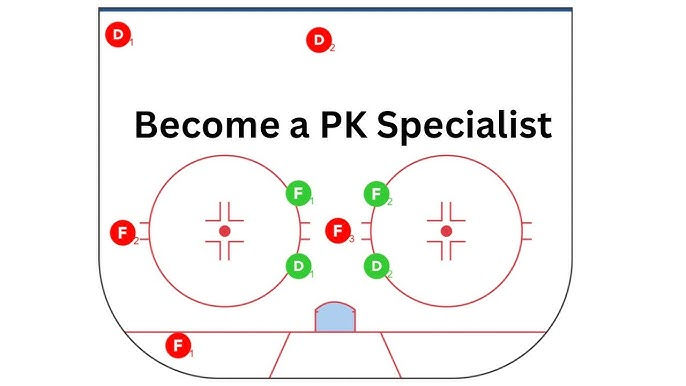Understanding the Passive Box Penalty Kill in Hockey
- Kevin Geist
- Aug 19
- 2 min read

Penalty killing is one of the most demanding aspects of ice hockey, requiring discipline, awareness, and teamwork. Among the different penalty kill formations, the passive box is one of the most traditional and widely used. While not as aggressive as other penalty kill systems, its strength lies in structure, positioning, and forcing predictable plays from the opposition.
What Is the Passive Box?
In the passive box penalty kill, the four defending skaters form a tight, square-shaped formation in front of their net. The two defensemen sit lower in the zone, close to the crease, while the two forwards play higher—usually around the tops of the faceoff circles. This shape mirrors a “box,” and the players’ movement is
mostly limited to shifting together as the puck moves around the perimeter.
Unlike aggressive systems (such as the diamond or wedge +1), the passive box does not chase the puck carrier unless absolutely necessary. Instead, it prioritizes staying compact, blocking passing lanes, and forcing the power play unit to settle for low-danger perimeter shots.
Key Principles of the Passive Box
Protect the House The primary goal is to defend the slot and crease area—where most high-quality scoring chances come from. Players are disciplined in maintaining their spacing to avoid leaving gaps in front of the net.
Stick Positioning Every player keeps their stick active in the passing lanes, discouraging dangerous cross-ice passes that can lead to one-timers.
Controlled Movement The “box” shifts as a unit. If the puck is on the left wall, the whole formation shifts left, and vice versa. The movement is minimal but synchronized, ensuring the defenders never stretch themselves too thin.
Shot Blocking Since the passive box encourages opponents to shoot from the perimeter, defenders must be committed shot blockers. Laying out to block point shots and collapsing when the puck moves low are key to success.
Clear and Recover Once possession is won, penalty killers aim for hard clears down the ice rather than risky breakout passes. Resetting the kill is part of the strategy.
Advantages of the Passive Box
Limits Dangerous Chances: By clogging the middle, it forces opponents to the outside.
Low Risk: Players don’t overcommit or get caught chasing.
Easy to Teach: Its structure is simple, making it effective at all levels of hockey.
Weaknesses of the Passive Box
Concedes Perimeter Time: Skilled power plays can patiently move the puck until a seam opens.
Relies on Goaltending: Since shots from the outside are often allowed, the goalie must be sharp and well-positioned.
Predictable: Opponents know they’ll have time on the outside and may run set plays to break it down.
When Teams Use It
The passive box is often favored by teams that:
Have strong, reliable goaltending.
Want to minimize risk rather than create shorthanded chances.
Are protecting a lead and don’t want to give up odd-man breakdowns.
Final Thoughts
The passive box penalty kill may not be flashy, but it’s stood the test of time because of its simplicity and effectiveness. By staying compact, disciplined, and patient, teams using this system can frustrate even the most talented power plays. It’s a reminder that in hockey, sometimes the best strategy is not to chase the puck—but to make the opponent take the shots you want them to take.







